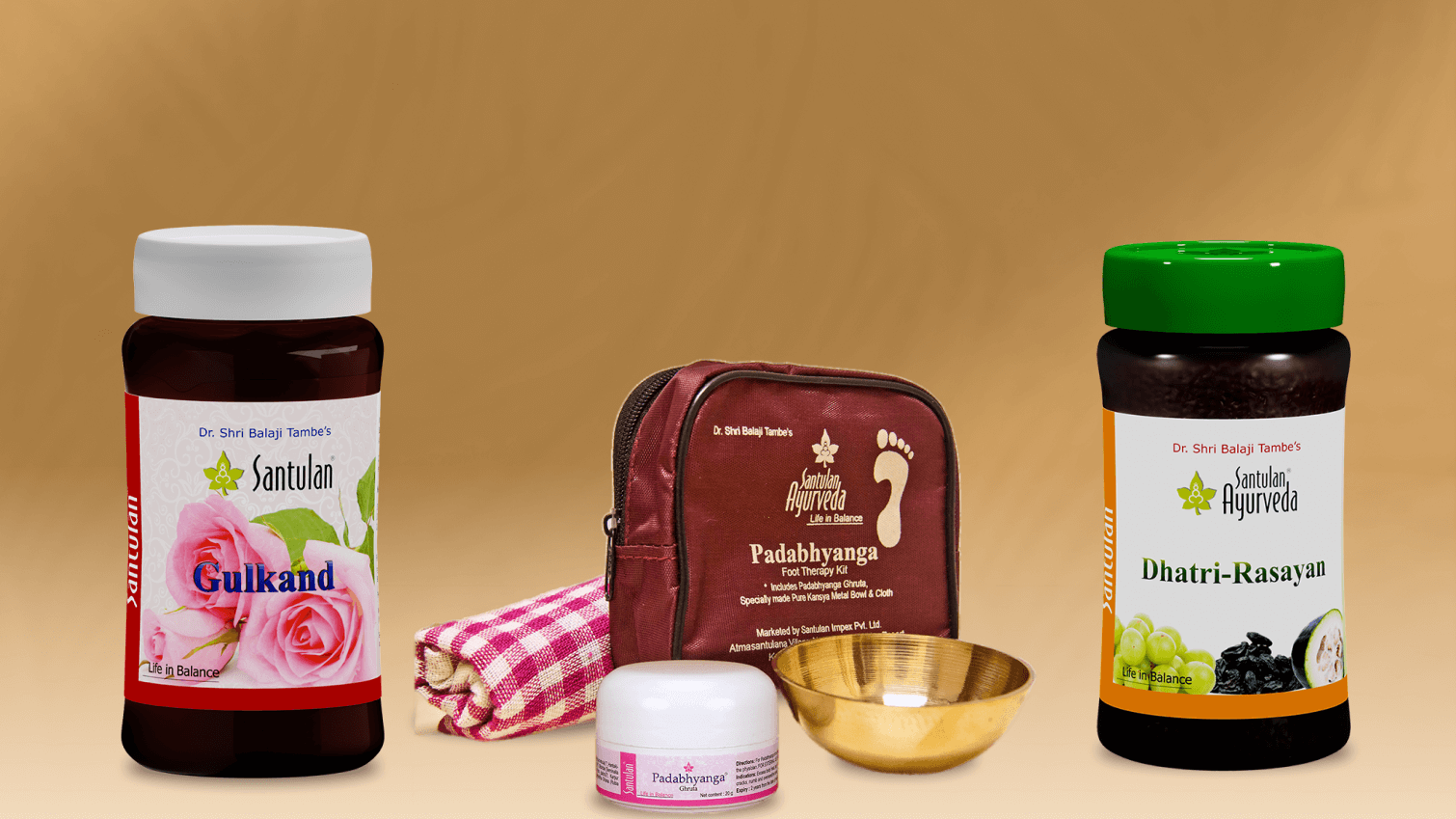Among the many unique concepts in the ancient Indian sciences is the principle of ‘Lok-Purush-Nyaya’. Simply put, it means that whatever is in the external environment, also exists within the individual who is inside the environment. Whatever occurs in nature, affects every living thing. This critical foundational truth is also the basis for Rutucharya or the entire seasonal and daily regimen explained in Ayurveda. If we can become aware of the changes as per season and change our diet and lifestyle accordingly, we will help ourselves remain healthy and enjoy life to its fullest.

The time between the rainy season and winter is called Sharad Rutu in India. It can be loosely equated with Autumn. It is also referred to as the ‘hot season’ of September-October. This happens when the clouds of the rainy season clear away again allowing the Sun’s rays to heat the land and all the beings living on it. This leads to an excitation of Pitta Dosha in the body. Another typical sign of Sharad Rutu is the rise in Moon-energy resulting in cooler nights. It is as if nature tries to balance its own heat by itself. Since Pitta is responsible for digestion, assimilation of food improves in comparison to the previous season. At the same time, due to the increase in Pitta, one has to avoid foods that increase heat.
The Charak Samhita says,
Tatrannapanam Madhuram Laghu Sheetam Satiktakam |
Pittaprashamanam sevyam matraya suprakankshitaihi ||
Meaning: In Sharad Rutu, one should eat food that is primarily sweet along with a little bitter in taste, easy to digest, cooling in effect, in appropriate quantity, as per the appetite.
RECOMMENDED DIET
Grains – Rice, Jwari (Sorghum), Khapli Gahu (Eincorn wheat), Rajgeera (Amaranthus)
Beans – like Moong (green gram), Masoor (red lentil), Matki (moth or mat bean),
Vegetables – Dudhi (bottle gourd), Tondli (ivy gourd), Dodake (ridged luffa), Ghosale (smooth luffa), Bhendi (lady fingers), Padval (snake gourd), Petha (ash gourd), Karela (bitter gourd), Patato (in boiled form), Methi (fenugreek) and Spinach
Fruits – Pomegranate, Figs, Apple, Pear, Sweet Lime, Quava, Custard Apple, Coconut Water and Sugarcane Juice
COOKING TIPS
While cooking dal or vegetables, use your spices in minimal quantities. Spices like Jeera (cumin seeds), Turmeric, Dhane (coriander seeds), Methi (fenugreek seeds), Tamalpatra (bay leaves), Sauf (fennel seeds), Kokam or Aamsul, Curry leaves and fresh Coconut are recommended at this time.

Since Ayurveda suggests eating food that is sweet in taste, this is the favourite season for those with a sweet tooth. Kheer (pudding) prepared from rice or rava (suji), Sheera prepared from moong dal or rava, Dudhi Halva, Petha, Sweet Rice, Gulab Jamun, Modak made from coconut and rice, Moong Dal Laddoo are all beneficial during this season.
Drinking water can be cultured with cooling herbs like khus (vetiver) and sandalwood. To do this, boil the water with a little bit of these herbs, cool and store for drinking.
A SPECIAL COOLING RITUAL
One of the ways to take advantage of the cooling energy of the moon in this season is the following. Keep some milk (we always recommend A2 milk) in a silver glass overnight, such that the mouth of the glass is exposed to the moonlight. Cover it with a thin cloth like muslin. The next morning, add a spoon of stone sugar (mishri) or Shatavari Kalpa and drink.
Even your clothing has a profound effect on your health. In this season, it is recommened to use either cotton or silk clothes that are not very tight and are light in colour. Natural fragrances made from cooling flowers and herbs or their essential oils are one of the best ways to reduce Pitta dosha. Keep natural Rose or Jasmine flowers in the house or use Rose, Khus and Sandalwood attars at this time. Sitting in moonlight, in the late evenings, and avoiding the strong Sun at day time is highly recommended in this season.
PITTA RELIEF
Take 2 teaspoons of castor oil once in 15 days during this season (and don’t go out too much that day) to cleanse the bowels. This expels excess heat from the intestines very effectively.

Those who have a Pitta-based constitution or the tendency for headaches, migraines, burning soles, heat rashes etc. are suggested to take some cooling medicines like Kamadudha, Santulan Pittashanti Tablets, Praval Panchamrut, Dhatri Rasayan, Gulkand, Amla Jam etc. Regular use of the Padabhyanga kit will also help to expel excess heat from the body. Women can apply a lep (paste) of natural mehendi leaves on palms and soles. It provides excellent cooling and also purifies the blood.
You will find, as you explore the concept of Rutucharya, that the Indian festival foods and rituals complement this concept and help us stay in alignment with the environment in aspects of our daily life and nutrition. To have turned these health practices into enjoyable festivals is one of the most beautiful achievements of ancient Indian culture. We hope to be able to raise awareness towards this aspect of Indian culture and offer these benefits to one and all!
